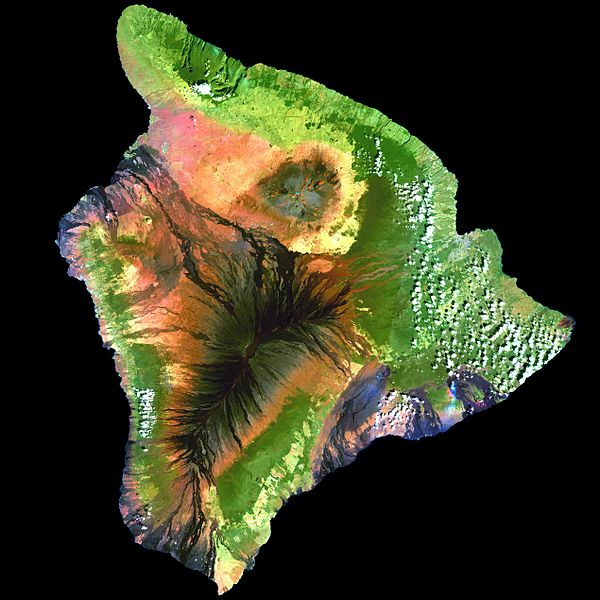Ficheiro:Island of Hawai'i - Landsat mosaic.jpg

Dimensões desta antevisão: 600 × 600 píxeis. Outras resoluções: 240 × 240 píxeis | 480 × 480 píxeis | 768 × 768 píxeis | 1 024 × 1 024 píxeis | 2 048 × 2 048 píxeis | 5 076 × 5 076 píxeis.
Imagem numa resolução maior (5 076 × 5 076 píxeis, tamanho: 5,19 MB, tipo MIME: image/jpeg)
Histórico do ficheiro
Clique uma data e hora para ver o ficheiro tal como ele se encontrava nessa altura.
| Data e hora | Miniatura | Dimensões | Utilizador | Comentário | |
|---|---|---|---|---|---|
| atual | 11h59min de 1 de setembro de 2009 |  | 5 076 × 5 076 (5,19 MB) | Túrelio | saved with 95% quality (low compression), but without "progressive" option |
| 11h59min de 1 de setembro de 2009 |  | 5 076 × 5 076 (4,9 MB) | Bidgee | Fix thumbnail generation issue caused by progressive loading. | |
| 11h31min de 1 de setembro de 2009 |  | 5 076 × 5 076 (4,91 MB) | Rocket000 | reuploading | |
| 11h52min de 27 de dezembro de 2007 |  | 5 076 × 5 076 (4,91 MB) | Avenue | {{Information| |Description=This simulated true-color image of the island of Hawai'i was derived from data gathered by the Enhanced Thematic Mapper plus (ETM+) on the Landsat 7 satellite between 1999 and 2001. |Source=[http://veimages.gsfc.nasa.gov/2712/l |
Utilização local do ficheiro
As seguintes 2 páginas usam este ficheiro:
Utilização global do ficheiro
As seguintes wikis usam este ficheiro:
- af.wikipedia.org
- ar.wikipedia.org
- ast.wikipedia.org
- az.wikipedia.org
- be.wikipedia.org
- bn.wikipedia.org
- br.wikipedia.org
- ca.wikipedia.org
- ceb.wikipedia.org
- cy.wikipedia.org
- de.wikipedia.org
- de.wikivoyage.org
- en.wikipedia.org
- Hawaii (island)
- Mauna Loa
- Landsat program
- Geoinformatics
- Puna, Hawaii
- User:Spikebrennan
- Portal:Hawaii/Selected article
- Portal:Hawaii/Selected article/11
- Wikipedia:Featured picture candidates/February-2008
- Wikipedia:Featured picture candidates/Big Island of Hawai'i
- User:Hawaiian Mafia
- User:Aoi/sandbox
- es.wikipedia.org
- es.wikibooks.org
- eu.wikipedia.org
- fa.wikipedia.org
- fr.wikipedia.org
- fr.wikivoyage.org
- ga.wikipedia.org
- haw.wikipedia.org
- he.wikipedia.org
- hi.wikipedia.org
- hu.wikipedia.org
- ia.wikipedia.org
- id.wikipedia.org
- incubator.wikimedia.org
- is.wikipedia.org
- ja.wikipedia.org
Ver mais utilizações globais deste ficheiro.

